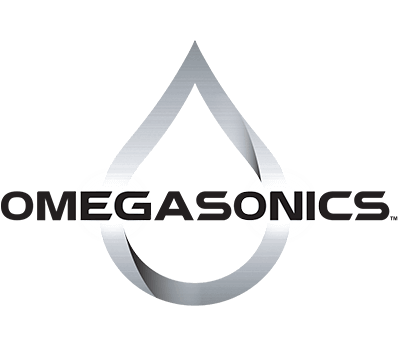You’ve got a big job ahead of you: stripping stubborn, old paint away from machined parts.
Hours of work, scrubbing away with a wire brush, your head spinning with the odor of solvents that always seem to creep inside your mask no matter how good the mask is.
If you’re not doing it personally, then you’re talking about one of your employees doing it, meaning lost time to labor and money down the drain. But that isn’t the case if you use an ultrasonic cleaner to do the job.
What is an Ultrasonic Cleaner?
Simply put, an ultrasonic cleaner is a device that utilizes piezoelectric transducers, which vibrate against a diaphragm to produce high-frequency sound waves. When these ultrasonic waves pass through a liquid medium and strike against an object immersed in the bath, they produce millions of microscopic bubbles.
These bubbles are formed and collapse over and over again in milliseconds, releasing powerful jets of energy in a well-known physical effect called “cavitation.” The effect of cavitation, coupled with water temperature and specially designed detergents, thoroughly and gently cleans even the most stubborn contaminants away from the surface of the object. With the right detergent, even old paint can be stripped away with little effort or time spent.
Let Ultrasonic Cleaner Cavitation do the Heavy Lifting
Cavitation is so powerful–temperatures in excess of 10,000°F and pressures in excess of 10,000 PSI are briefly generated–that it literally blasts away paint and other contaminants. But because the implosion is so fast it does not damage surfaces when kept under control. As an added benefit, the microscopic bubbles penetrate cracks, crevices and blind holes that are impossible to reach by hand. All told, ultrasonic cavitation accomplishes what hand cleaning and solvents cannot do, both more thoroughly or faster.
Selecting an Ultrasonic Cleaning Solution
Today’s ultrasonic cleaning solutions are biodegradable – including those that work best for paint removal. For example, Omegasonics has created a detergent called OmegaChem, which is a unique cleaning agent specifically formulated to be a paint remover. OmegaChem is used with ultrasonic cleaners to remove petroleum-based paint and paint residue from a variety of surfaces, including spray gun nozzles. OmegaChem, though formulated for paint removal, is still far safer for use and exposure than solvents, and unlike solvents, can be disposed of in environmentally-friendly ways far more easily.
Keep in mind that each paint removal task may be different. When putting the parts that need the paint stripped from them in the ultrasonic cleaning device, follow the instructions. You may need to experiment, too. Some cycles may take longer than others depending on what you’re working. However, after finding out what solutions and times work best, you’ll soon become an expert.
Ultrasonic Cleaning Preparation and Maintenance
As always, follow the manufacturer’s instructions given for both the detergent and the ultrasonic cleaner. For example, fresh ultrasonic cleaning solutions should be degassed to remove entrapped air before you start the cleaning cycle.
You can do this by filling the tank with solution, then turning on the ultrasonic cleaner and letting it run for 40 minutes or until air bubbles stop rising to the surface. This degassing will make the solution more effective, as air bubbles interfere with cavitation and make it less powerful.
Before putting the painted object in the solution bath, scrape away any loose or blistered particles. Don’t forget the detergent solution temperature. Make sure you set the ultrasonic cleaner thermostat for the recommended solution temperature, as per manufacturer’s instructions.
Place the parts in the basket in a way they do not contact each other, lower the basket into the solution and cover the unit with the supplied lid. At the end of the cycle, remove the basket, rinse the parts and inspect to be certain the paint is removed satisfactorily. The parts should be thoroughly dried before repainting. This can be done with air drying or by using a drying cabinet.
Remember: when the detergent no longer cleans effectively, it should be changed. Dispose of it along with the accumulated paint residue according to local regulations. Since you’re not handling a toxic solvent, chances are you’ll be able to dispose of it along with the other wastewater from your operations. Take the time to thoroughly clean the tank following the manufacturer’s recommendations before refilling it with fresh solution.
If you do a lot of paint stripping, you’ll find that using an ultrasonic cleaner plus the proper detergent solution will definitely save you money and labor costs in the long run. Contact our experts at Omegasonics at 888-989-5560 or email us at to find out more.

